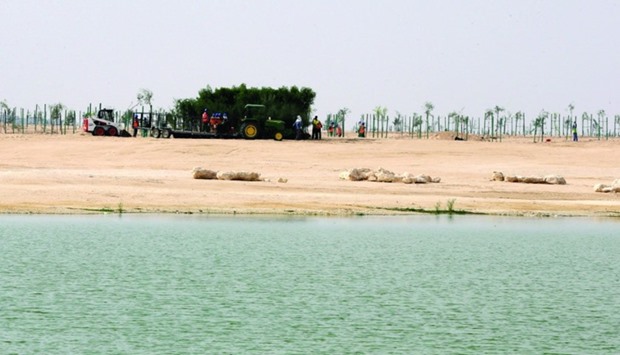The residential and commercial areas lie between West Bay and many other localities of northern Doha are to gain more from the project.
The treatment plant and the largest man made forest of the Gulf region on its periphery together spread out over 16sq km.
On a visit to the site, organised by Ashghal's Drainage Projects Management department, journalists were shown around the treatment plant, pumping station, two man- made lakes and also the landscaped green environs surrounding the plant besides the forest where more than 40,000 trees have been planted.
Ashghal's Drainage Networks Projects Management manager Khalid al-Khayarin and assistant manager (operations and maintenance) Khalid al-Obaidaly briefed the visitors on the ongoing operations and future scope of the project.
Considered as one of the largest strategic projects of the country, the plant and the man made forest together cost the exchequer close to $3.65bn for its construction, and maintenance and operations for the next 10 years, as part of the agreement with its builders Keppel Seghers, a Singapore-based company. Out of the total cost, $1.20bn is for the 10-year operations and maintenance.
The catchment area of the treatment plant extends to such areas as Al Kheesa, Al Khariatiyat, Al Duhail, Pearl and Lusail Development areas abesides northern Doha. The treatment plant is located approximately 55km from the heart of Doha.
The treated water will be used for vegetation and watering of the areas covered by its operations, including the man made forest.
In the Phase-1 of the project, the plant could treat upto 244,000 cubic meters of waste water. It is learnt that currently the plant is handling more than 55,000 cubic metres of waste water daily.
There would be considerable improvement in the quantities treated at the plant in future when more drainage networks would be rebuilt and laid across the areas covered by its operations, it was told.
The ultra modern facility features such advanced biological treatment processes as well as a modern filtration membrane, which separates large particles and small granules from wastes collected. It uses ultra violet technologies to generate reclaimed water for reuse, such as treated effluent for non-potable use.
Besides the facility is equipped with a thermal drying plant that processes the wastewater sludge, generated during the treatment process, to pellets for safe disposal with stipulated international standards.
The facility is also the first to be equipped with a comprehensive odour control system to minimise the impact on the surrounding environment.

